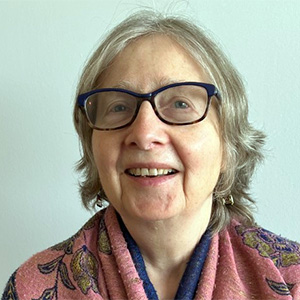
Spotlighting the complex ballet of cancer cell death
When he was an undergraduate at the University of Colombo in Sri Lanka, Nishanth Kuganesan undertook a solo study probing the impact of radiation treatments on chromosomes in lymphocytes, a family of white blood cells in the immune system. The small-scale study of blood samples had measurable results: He found evidence of cellular damage. And he also found a career path: research on the biology of cancer.
Kuganesan, who said he has been “very passionate about science” since his boyhood, is now a fifth-year doctoral student at the University of Toledo. Come April, he is set to defend his dissertation, which details nuances of ferroptosis, such as the critical roles of the gene TP53, dubbed the “guardian of the genome,” and the retinoblastoma/E2F checkpoint in curbing cancer.

As he considers his future, this Ph.D. candidate in cell and molecular biology dreams of making a difference in battling disease. “I really want to be in research and development … either in academia or in industry,” Kuganesan said.
He credits his advisor William Taylor, professor and associate chair of the biological sciences department at the University of Toledo, for providing him with room to grow as a scientist. “He has given me a lot of freedom to explore in his lab,” Kuganesan said.
There, Kuganesan discovered several new steps in the biochemical ballet of ferroptosis. “It didn’t make sense at the beginning,” he recalled.
But the pieces fell into place, and as first author of the paper based on his team’s work on the tumor suppressor p53, Kuganesan received a 2023 JBC Herbert Tabor Early Career Investigator Award.
Beyond the thrill of new knowledge, Kuganesan’s award-winning research on the intricate cellular dance of tumor suppression could help refine future steps in chemotherapy, he said.
“Our findings will help drug makers be cautious when they are making therapeutic drugs.”
No longer a linear pathway
Early in their study of the programmed cell death known as ferroptosis, Nishanth Kuganesan and his collaborators found that high levels of the tumor protein p53 heighten the destruction of cancer cells. Yet p21, a protein also known as cyclin-dependent kinase inhibitor 1, reins in ferroptosis. And they discovered something else: Overexpression of E2F, a family of genes that helps code for cell growth, also suppresses ferroptosis, with the involvement of p21.
E2F performs dual roles on the cellular stage. “E2F is essential for cells to function,” Kuganesan said. “In most cancer cells, it’s more than what’s needed, and this is the problem.”
Meanwhile, cyclin-dependent kinases and retinoblastoma proteins also play a part, stepping up to bar cancer cell death. Taken as a whole, the team’s recent study spotlights the complex interplay of the factors in ferroptosis. It’s as if several sets of conflicting choreography were being danced on the stage of tumor suppression.
“The whole thing was kind of unexpected,” Kuganesan said. “The linear pathway of the cell cycle in ferroptosis is not linear anymore.”
During the study, L.M. Viranga Tillekeratne, a University of Toledo professor of medicinal and biological chemistry, led the synthesis of CETZOLE-1, a novel small molecule. Kuganesan and his team used that substance to discover the mechanism of ferroptosis.
“Tumor suppressor p53 promotes ferroptopsis in oxidative stress conditions independent of modulation of ferroptosis by p21, CDKs, RB, and E2F,” appeared in the Journal of Biological Chemistry in December 2021. Kuganesan and other winners of the JBC Tabor Award will give talks during a symposium on Sunday, March 26, at Discover BMB in Seattle.
Enjoy reading ASBMB Today?
Become a member to receive the print edition four times a year and the digital edition monthly.
Learn moreGet the latest from ASBMB Today
Enter your email address, and we’ll send you a weekly email with recent articles, interviews and more.
Latest in People
People highlights or most popular articles

Mydy named Purdue assistant professor
Her lab will focus on protein structure and function, enzyme mechanisms and plant natural product biosynthesis, working to characterize and engineer plant natural products for therapeutic and agricultural applications.

In memoriam: Michael J. Chamberlin
He discovered RNA polymerase and was an ASBMB member for nearly 60 years.

Building the blueprint to block HIV
Wesley Sundquist will present his work on the HIV capsid and revolutionary drug, Lenacapavir, at the ASBMB Annual Meeting, March 7–10, in Maryland.

In memoriam: Alan G. Goodridge
He made pioneering discoveries on lipid metabolism and was an ASBMB member since 1971.

Alrubaye wins research and teaching awards
He was honored at the NACTA 2025 conference for the Educator Award and at the U of A State and National Awards reception for the Faculty Gold Medal.

Designing life’s building blocks with AI
Tanja Kortemme, a professor at the University of California, San Francisco, will discuss her research using computational biology to engineer proteins at the 2026 ASBMB Annual Meeting.

